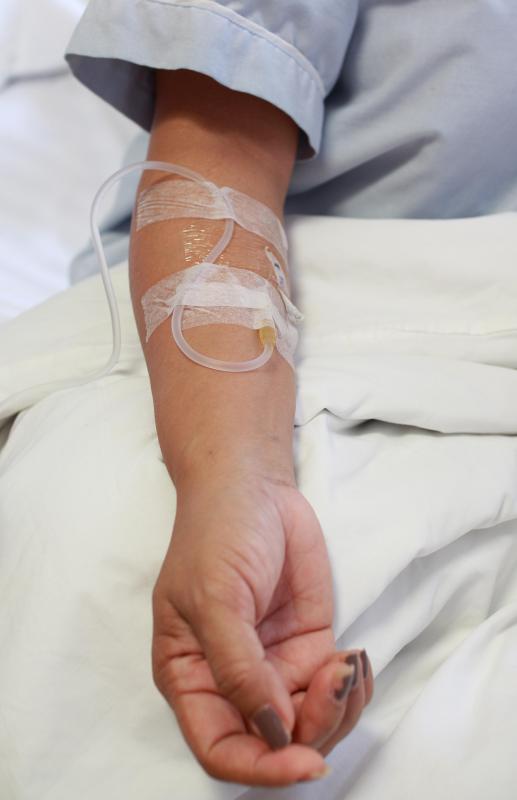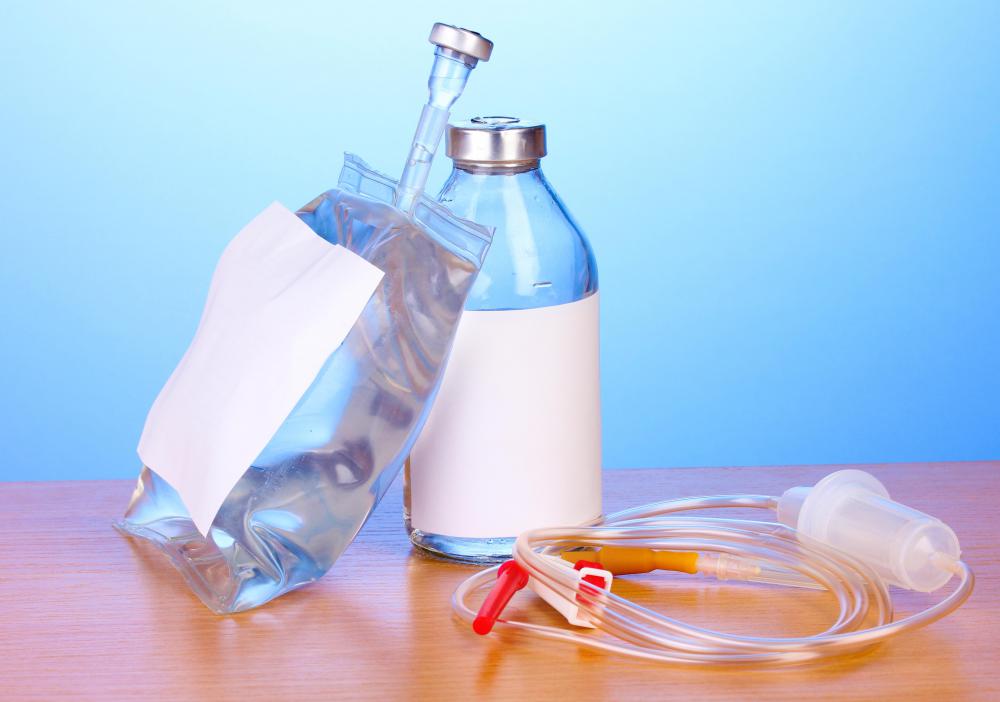At WiseGEEK, we're committed to delivering accurate, trustworthy information. Our expert-authored content is rigorously fact-checked and sourced from credible authorities. Discover how we uphold the highest standards in providing you with reliable knowledge.
What is Intravenous Treatment?
Intravenous treatment is a broad term that can describe many different medications delivered intravenously (directly into a vein), usually through intravenous (IV) drip to address a variety of medical conditions. This form of treatment or therapy may vary as to the length it takes to perform it. It might be a one-time short-term administration of fluid and meds, or it could take place over several days. It can also be performed at home or in a more standard medical setting like a hospital or clinic, depending on frequency or urgency of a condition and patient needs.
The simplest form of intravenous treatment is administration of fluids to address dehydration. Electrolyte balanced fluids are injected into a small line or catheter that has been inserted into a vein, usually in the arm or hand, for several hours to several days to treat dehydration. Many people who get IV therapy of other forms also receive some degree of fluids, but it has medication mixed into it that can address specific problems. For instance, people with severe infections might need IV antibiotics, since the antibiotics get into the system much faster and can work more quickly. These medicines are often delivered with a certain amount of balanced fluids, too.

One of the reasons why intravenous treatment can be favored in so many instances is because it does correspond to quicker medication delivery. Drugs that go directly into the veins bypass the gut and have almost 100% bioavailability, or they retain the same strength and are immediately present in the circulatory system. Drug delivery by other means reduces strength, and not always by the same amounts, and it takes longer for medicines to get where they need to go. When doctors are faced with a condition that benefits by immediate treatment, intravenous treatment is often the best first choice.

Other reasons exist for using intravenous treatment over other types of therapy. Sometimes medications may be dangerous to different parts of the body like the tongue, throat or esophagus, and delivery of them is safer through the veins. This might be true of some forms of chemotherapy, though there are some chemotherapy pills available in certain areas.

While many people think of IV therapy as taking place in medical settings, some people have intravenous treatment at home. It usually has to be administered by a nurse, and might be part of an overall homecare strategy. Alternately, people might retain their IV line for several days to a few weeks, and have a daily intravenous treatment at a clinic or hospital. This saves money for those who are relatively healthy and don’t need to be hospitalized. People who need treatment for long periods of time usually aren’t able to keep the small simple IV line and might require a permanent, but removable, catheter to get frequent treatments.
Ultimately IV therapy can be useful to treat many different forms of conditions. These include, but are not limited to, the following: cancer, initial herpes outbreaks, migraines, bacterial infections, dehydration, osteoporosis, psoriasis, seizures, ulcerative colitis and some forms of heart disease. It is not the best indication in all instances, certainly, yet it is a mainstay of the medical community that promotes health in many ways.
AS FEATURED ON:
AS FEATURED ON:













Discuss this Article
Post your comments